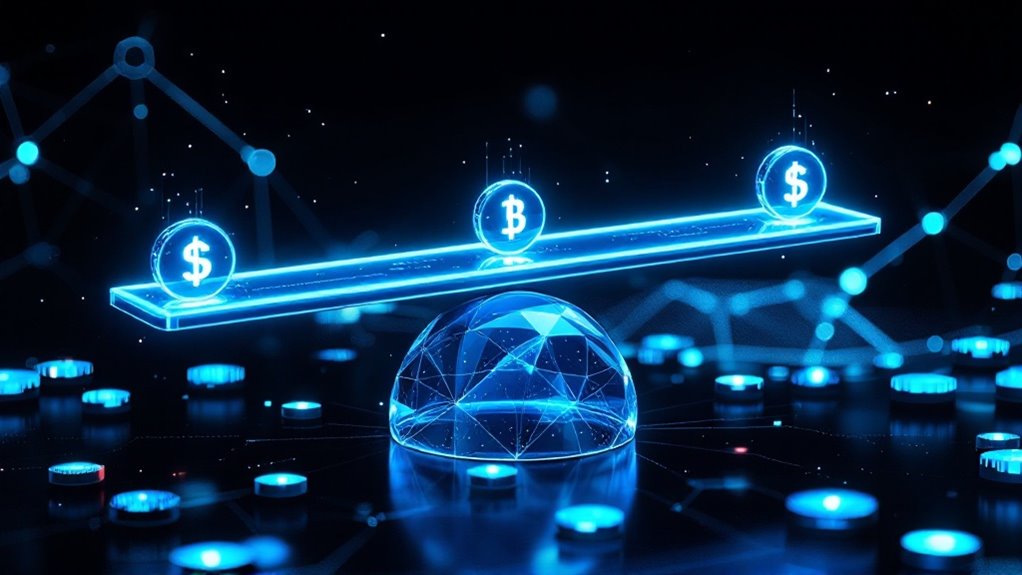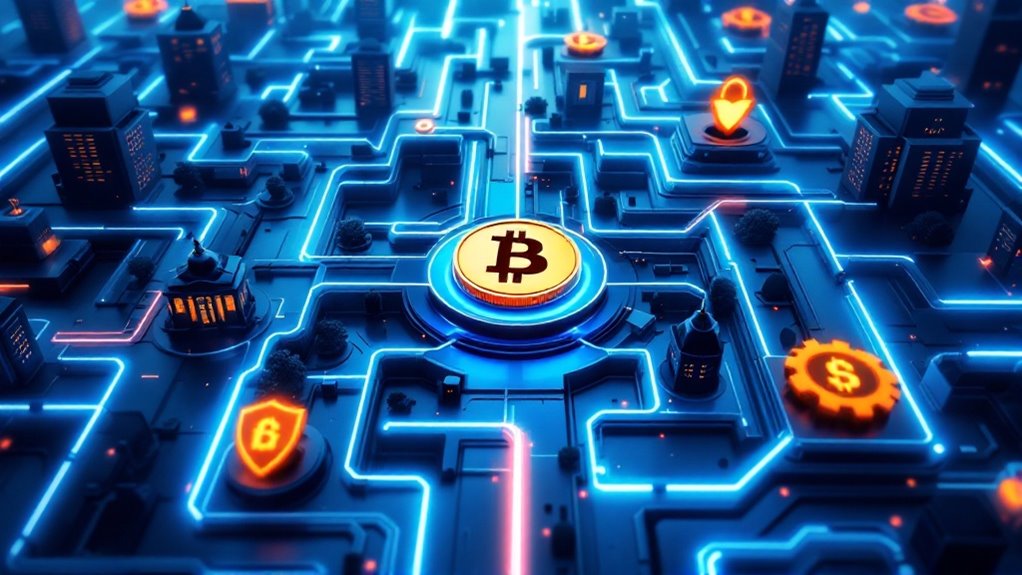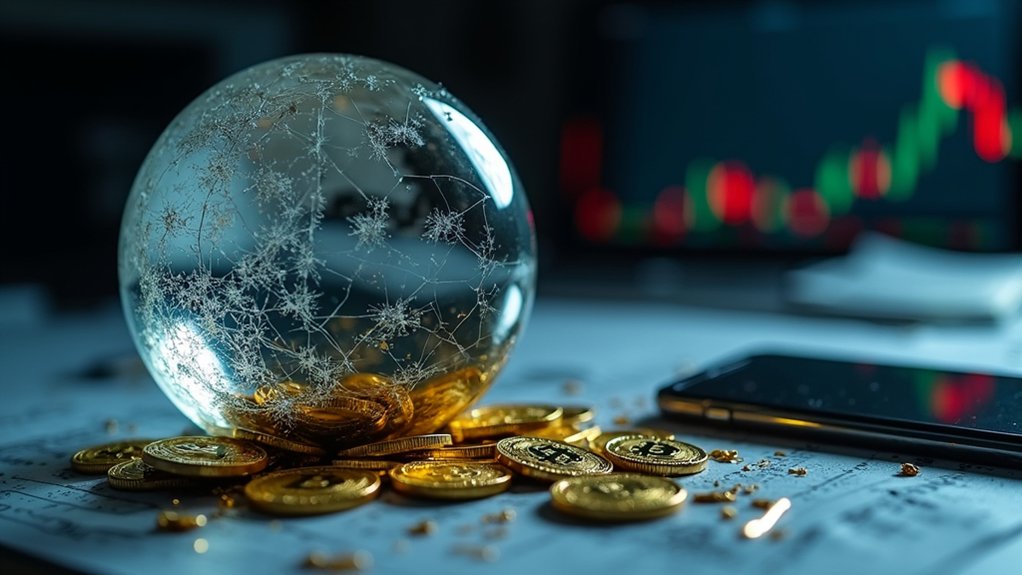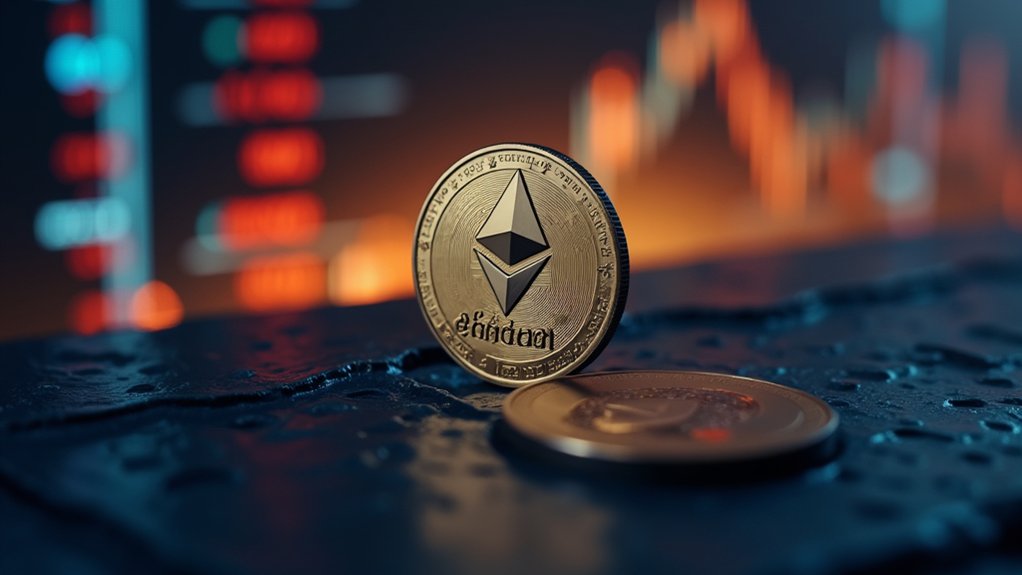Automated Market Makers (AMMs) transformed cryptocurrency trading by replacing human middlemen with smart contracts and mathematical formulas. These ingenious protocols use liquidity pools where traders deposit token pairs, enabling 24/7 algorithmic trading with Swiss-watch precision. Unlike traditional exchanges with chaotic order books, AMMs maintain balance through elegant formulas like x * y = k. While some skeptics raise eyebrows, AMMs have democratized trading and laid the foundation for decentralized finance's expanding universe of possibilities.

Revolution rarely announces itself with fanfare, but in the world of cryptocurrency trading, Automated Market Makers (AMMs) have orchestrated a quiet upheaval of traditional finance. These decentralized trading mechanisms have replaced the familiar chorus of shouting traders and blinking order books with the elegant whisper of mathematical formulas. At their core, AMMs operate through liquidity pools – digital reservoirs where users deposit pairs of tokens, allowing others to trade against these shared resources.
AMMs silently reshape finance through elegant mathematical formulas, replacing traditional trading chaos with algorithmic precision and shared liquidity pools.
The magic happens through a deceptively simple mathematical formula: x * y = k. Like a digital seesaw, this constant product formula maintains balance in the pools, determining prices with unwavering precision. Gone are the days of waiting for matching orders or haggling with market makers. AMMs stand ready to trade 24/7, their algorithms humming along on blockchain networks, facilitating exchanges with the reliability of a Swiss watch. These systems offer lower transaction fees compared to traditional exchanges. First conceptualized by Vitalik Buterin in 2017, AMMs have since revolutionized decentralized trading.
Pioneers like Uniswap blazed the trail, while innovative protocols like Curve and PancakeSwap have added their own flavors to the recipe. These platforms have democratized market making, allowing anyone with crypto assets to become a liquidity provider and earn trading fees. Yet, this financial democracy comes with its own set of challenges. Liquidity providers must navigate the choppy waters of impermanent loss, while traders contend with slippage in their transactions. Building on smart contracts technology, these platforms ensure transparent and efficient trading without traditional intermediaries.
The impact of AMMs extends far beyond simple token swaps. They've become the beating heart of decentralized finance, pumping liquidity through an ecosystem of synthetic assets, yield farming strategies, and cross-chain bridges. Innovation continues to flow, with developments like concentrated liquidity and dynamic fees pushing the boundaries of what's possible in decentralized trading.
Like any revolution, AMMs have their skeptics and champions. But as traditional finance looks on with a mixture of curiosity and concern, these algorithmic market makers continue their quiet transformation of the trading landscape. They represent a future where mathematics and code replace intermediaries, where liquidity flows as freely as information, and where financial innovation knows no bounds.
Frequently Asked Questions
What Happens to AMMS During Extreme Market Volatility or Flash Crashes?
During extreme volatility and flash crashes, markets experience severe liquidity withdrawals, significant price distortions, and amplified systemic risks. Trading algorithms struggle to maintain accurate pricing while interconnected systems can create dangerous feedback loops.
How Do AMMS Handle Tokens With Very Low Trading Volume?
Low-volume tokens face wider bid-ask spreads and increased slippage. Liquidity mining incentives, fee sharing programs, and specialized token pair pools help attract market makers and maintain basic trading functionality.
Can AMMS Be Manipulated by Large Traders or Trading Bots?
Yes, large traders and bots can manipulate prices through significant trades, sandwich attacks, and flash loans. Low liquidity pools are especially vulnerable to price manipulation and front-running exploitation for profit.
What Security Measures Protect AMMS From Smart Contract Exploits?
Smart contract security relies on independent audits, formal verification, bug bounties, time-locked upgrades, multi-signature controls, and continuous monitoring. Emergency pause functions and incident response plans provide additional protection against potential exploits.
How Do Gas Fees Affect AMM Trading Compared to Centralized Exchanges?
Gas fees make trading more expensive on decentralized platforms compared to centralized exchanges, which have no gas costs. This price difference particularly impacts smaller trades and can deter retail investors during peak congestion.









